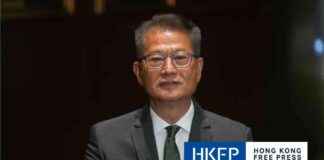China Announces Plan to Raise Retirement Age to 63 Amid Growing Concerns over Ageing Population
In a significant move to address the challenges posed by an ageing population, China announced on Friday that it would gradually raise its statutory retirement age. This decision comes as the country grapples with a looming demographic crisis, where hundreds of millions of people are expected to enter old age in the coming decades while the birth rate continues to decline.
The national population in China fell for the second consecutive year in 2023, raising concerns among policymakers about the potential severe impacts on the economy, healthcare, and social welfare systems if action is not taken promptly. With the retirement age in China remaining unchanged for decades and being among the lowest globally, the decision to raise it reflects the government’s recognition of the need to adapt to changing demographics.
Raising Retirement Age: A Necessary Step
The new policy entails a gradual extension of the statutory retirement age for male workers from 60 years to 63 years. For female workers, the retirement age will be increased from the original 50 or 55 years to 55 and 58 years, respectively, depending on the nature of their job. These changes are set to be implemented over a 15-year period starting from 2025.
Additionally, starting in 2030, the minimum years of basic pension contributions required to receive monthly benefits will be gradually raised from 15 years to 20 years, with an incremental increase of six months annually. Furthermore, the new regulations will allow individuals in China to postpone their retirement to a later date if they reach an agreement with their employers.
The decision to raise the retirement age was based on a comprehensive assessment of factors such as average life expectancy, health conditions, population structure, level of education, and workforce supply in China. Experts suggest that demographic changes, including an increase in life expectancy and years of education, played a crucial role in influencing this policy shift.
Li Changan, a labor economist at the University of International Business and Economics in Beijing, noted that the central government had initially proposed changing the retirement age in 2013, and there had been ongoing discussions on the topic over the past decade. He emphasized that many individuals were mentally prepared for this announcement, indicating a degree of acceptance within society.
Public Reaction and Social Media Discourse
Following the announcement, Chinese internet users took to social media platforms to discuss the implications of the new retirement age policy. Hashtags related to the topic on the Weibo platform garnered over 200 million views in less than an hour, highlighting the significance of this decision.
While some users expressed acceptance of the policy by simply stating, “Got it” or “It’s official,” others subtly hinted at their reservations. One user humorously remarked, “As long as we still get to choose whether or not we actually retire, I have no objections.” There were also concerns raised about the potential disparity in retirement ages between different generations, particularly those born in the 1990s and 2000s compared to earlier cohorts.
Government censors reportedly removed several posts from social media platforms, underscoring the sensitivity of discussions on national policies in China. Despite some dissenting voices, the overall sentiment seemed to acknowledge the necessity of adapting to the changing demographics and the challenges posed by an ageing population.
Expert Perspectives and Rationale Behind the Decision
Mo Rong, the director of the Chinese Academy of Labor and Social Security, emphasized that raising the retirement age was an essential step for the country to adjust to the new normal of population development. The move is seen as a strategic response to the increasing life expectancy and educational attainment of the population, aiming to enhance the efficiency of human resource utilization.
An article in the People’s Daily newspaper highlighted the reform as a means to align with the evolving demographic trends in China and optimize the utilization of human capital. It underscored the importance of adapting to the changing landscape of the workforce to ensure sustainable economic development and social welfare.
Looking Ahead: Implications and Challenges
As China prepares to implement the new retirement age policy, there are several implications and challenges that will need to be addressed. The gradual increase in the retirement age will likely impact workforce dynamics, retirement planning, and social security systems.
Employers will need to adjust their human resource strategies to accommodate longer working periods for their employees, ensuring a smooth transition to the new retirement age requirements. Additionally, individuals will need to reassess their retirement plans and savings goals to align with the extended working years.
The government will also need to monitor the implementation of the policy closely to address any potential inequalities or disparities that may arise as a result of the changes. Ensuring a fair and equitable transition for all individuals affected by the new retirement age regulations will be crucial in maintaining social cohesion and stability.
In conclusion, China’s decision to raise the retirement age reflects a proactive approach to addressing the challenges posed by an ageing population and changing demographic trends. By adapting to the evolving needs of society and the workforce, the country aims to foster sustainable development and ensure the well-being of its citizens in the years to come.



















